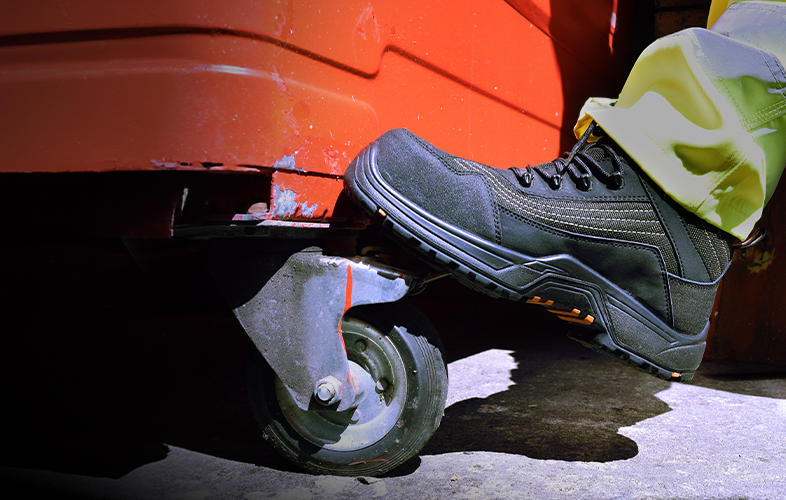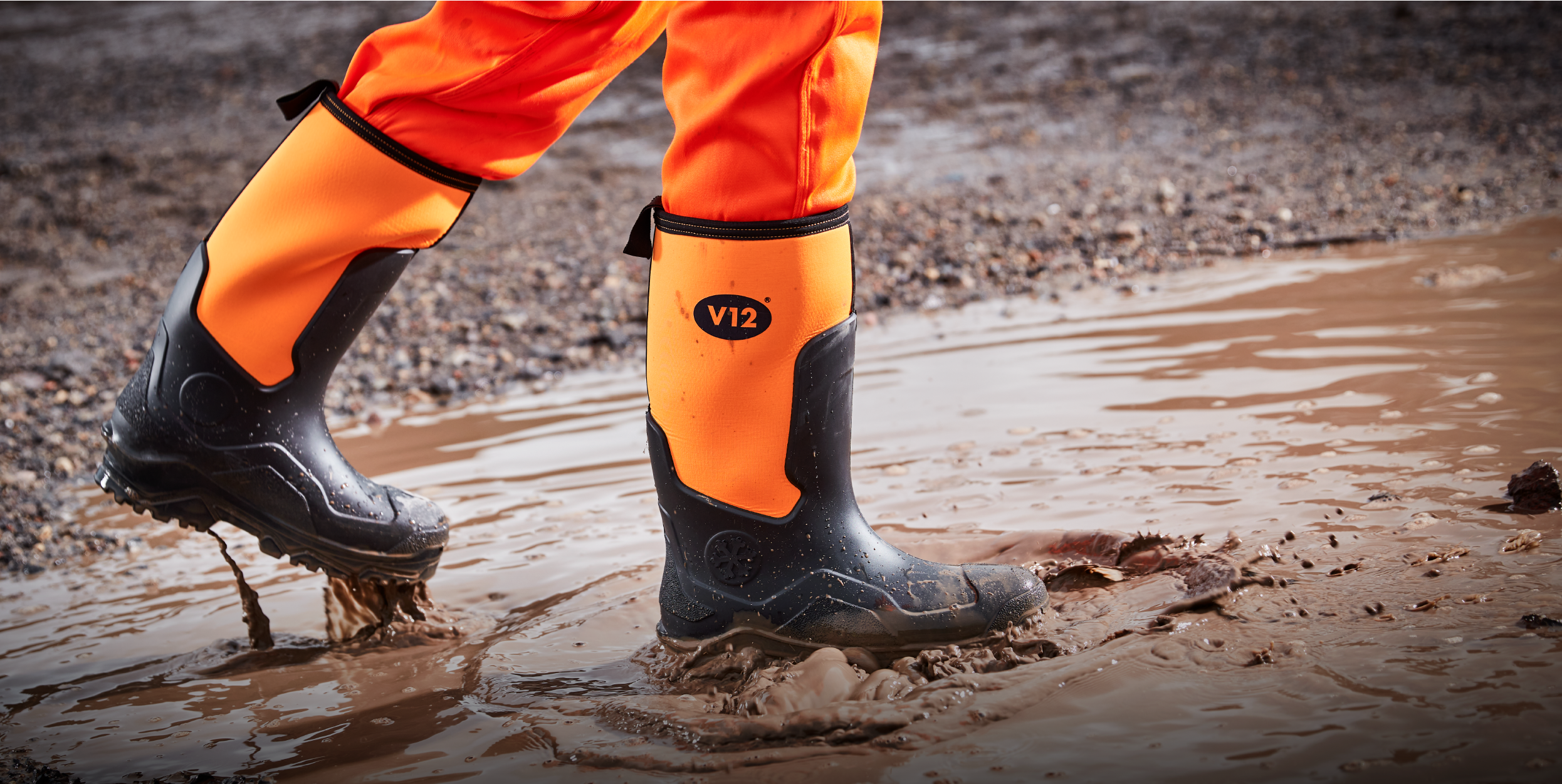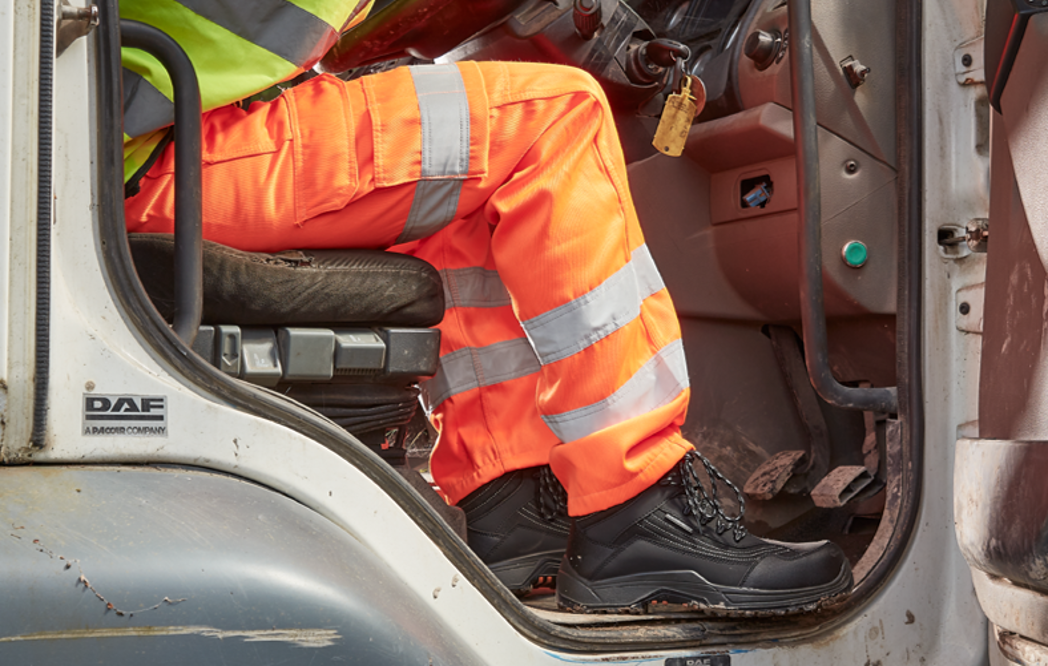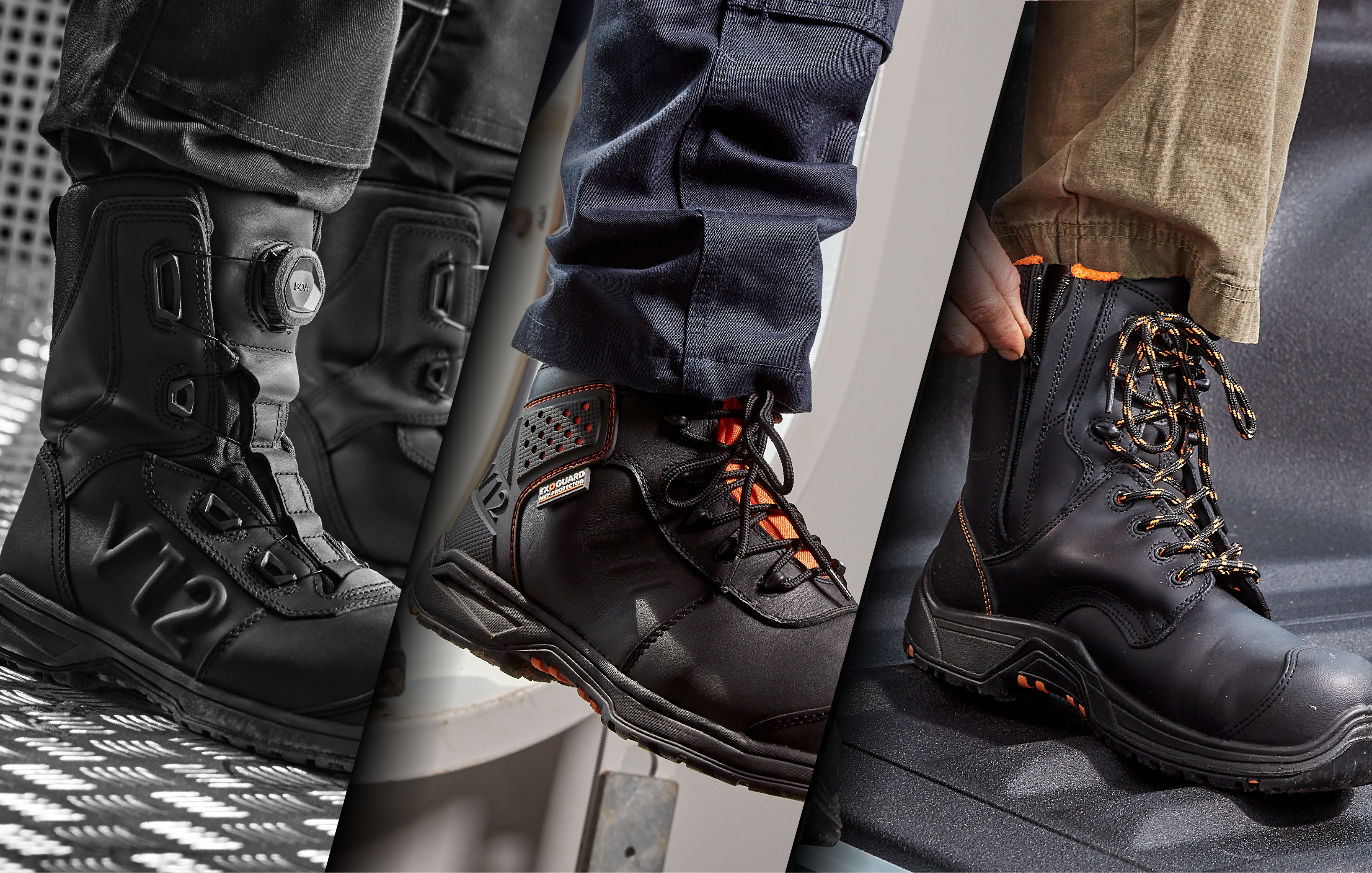If you’re in charge of Health and Safety at your workplace, you’ll know that safety isn’t just protection from hazards – it's protection from discomfort and poor foot health. And for those working in sectors such as Waste and Recycling, Construction or Grounds care who walk thousands of steps per day, offering them lightweight safety boots is an essential way of enhancing comfort.
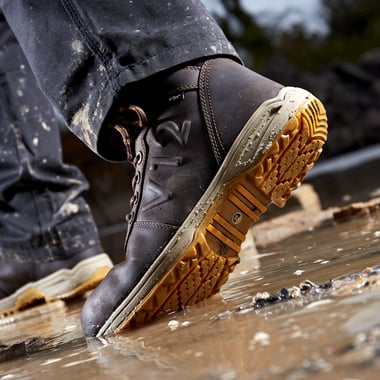 Did you know?
Did you know?
- A person expends 5 times more energy carrying weight on their feet than carrying the same weight on their back.
- A person is heavier walking than standing. Walking is a person's body weight plus push energy, which adds a staggering 30% to their standing weight.
Lightweight work boots aren’t just a ‘nice to have.’ With the correct fit, they can prevent the following debilitating and uncomfortable issues:
- Foot fatigue
- Tired and heavy legs
- Joint strain
- Loss of safety focus through discomfort
In other words, a recipe for low morale and well-being – two things a good Health and Safety Manager will want to avoid like, well, a pair of heavy boots. So, what should you look for in a boot’s design to give your team the best foot health and highest levels of performance at work with lightweight safety footwear?
COMPONENTS
Non-metal protective components such as composite or fibreglass are becoming an increasingly popular alternative to steel toecaps and anti-penetration midsoles. They are just as strong, and as well as being thermal insulating, they are significantly lighter than steel, and this weight saving can make a huge difference to the comfort of the wearer over the course of their day.
Find out more about the differences between metal and non-metal safety boot components in our whitepaper here.
MATERIAL
Weight reduction in footwear isn’t just about the protective componentry – the type of materials used also make a big difference.
A boot that incorporates EVA - (ethylene vinyl acetate) can reduce weight and provide great levels of comfort and performance as it’s a durable, flexible and significantly lightweight thermoplastic.
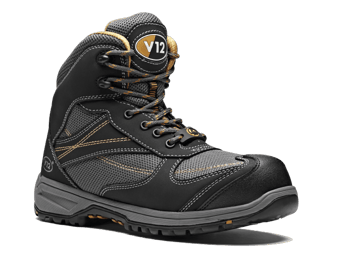 Look for a boot which has a midlayer made of EVA to make an impact on weight reduction for your team’s comfort. Take V12’s Safety and Hiker range – they are an incredibly lightweight collection of safety trainers and hikers, as they are completely metal-free and feature an EVA comfort midlayer. Tired feet out, comfort in.
Look for a boot which has a midlayer made of EVA to make an impact on weight reduction for your team’s comfort. Take V12’s Safety and Hiker range – they are an incredibly lightweight collection of safety trainers and hikers, as they are completely metal-free and feature an EVA comfort midlayer. Tired feet out, comfort in.
Secondly, boots featuring or made entirely of rubber can create additional weight, as rubber is a fairly heavy type of polymer. Boots using PU (polyurethane) as a rubber alternative can make a big difference to the overall weight, and as result, comfort.
Pictured: V1940 Torque, from V12's award-winning Trainer and Hiker range
Design
Furthermore, the amount of material that is used in the production of a boot is another way that wearers can find themselves carrrying around unnecessary weight.
Look for a boot with weight reduction in its design - like safety wellington V2110 Groundworker, designed with a Neoprene leg material which is significantly lighter than rubber, giving teams walking miles per day much sought-after comfort.
Pictured: V12's V2110 Groundworker safety wellington: light on weight, heavy on hazards
Are lightweight safety boots a compromise?
So with all this weight-saving and non-metal material, will lighter work boots match up to the heavier, bulkier safety styles?
To answer this question, always go back to the safety standards. Toecaps – no matter their material – are tested to 200 J, and likewise, midsoles, regardless of their steel, composite or fiberglass construction must withstand 1,100 N to pass the puncture resistance test.
Arguably, non-metal components have all the safety, but carry with them several additional benefits, such as providing greater flexibility than steel midsoles, and for people working in environments featuring a metal-detecting security scanner, non-metal boots won’t set off these alarms. Similarly, a material such as EVA or PU as an alternative to rubber isn’t a compromise, as these materials are durable and flexible as well as lighter on weight.
And as we always say at V12 Footwear, comfort is a part of safety, so if your team’s footwear is lightweight and offers them greater foot health and focus, then they are by their very nature offering them outstanding protection.
WE CAN MAKE YOUR WORKPLACE SAFER
The V12 Foot Health and Safety Assessment is a three-part product suitability process which sees us work with you to get the right safety footwear solution for your workplace. It features a:
- audit of your work environment
- multi-step safety footwear trial
- expert safety footwear recommendation
If you’d like to find out more about how we can help you and your team, click below.

